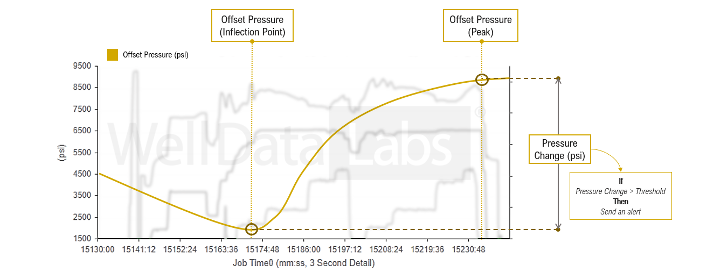Fracture-driven interactions, or FDIs, can be tough to detect in real-time even with the trained eye, but real-time machine learning now makes this possible.
FDIs are not a new menace in the oilfield. They have been a challenge since the beginning of time, and are becoming even more commonplace as operators look to tap every aspect of the reservoirs within their reach1. These impacts cause economic harm in three key ways:
-
- Decreasing your estimated ultimate recovery (EUR) per well,
- Requiring well cleanout in the case of a lateral that has sustained a significant impact, and
- Causing casing deformation, which can result in the loss of a parent well
Should they affect your operations, every single minute will have a significant dollar impact on your pad. By some estimates, FDIs can reduce the conductivity of producing fractures by 10 to 50 times1. Now, all of a sudden, what seemed to be a no-brainer pad has turned into a losing proposition that is seriously in the red.
This is why there has been a concerted effort to find a way to respond to these situations in seconds. Unfortunately, up to this point, this has largely been left to technicians who are tirelessly watching screens looking for signs of imminent danger. With the subtle pressure changes that occur within the offset wells, this can be like reading tea leaves. Not every interaction is detrimental. If you shut down as a result of acceptable communication, that “phantom” FDI has cost you significant money.
Furthermore, human decisions can lack continuity of action. Contrasting interpretations of the data can cause delays that can’t be undone once the FDIs occur. But now, with automated real-time alerting for offset well interactions, you can let the offset wells warn you when intervention is required.
Using data honed from hundreds of thousands of stages, models built and trained to identify FDIs from these enormous data sets are vastly more capable of identifying troubling trends than the human eye. Now, these models can be deployed to run in real-time, providing alerts (via email, SMS, or in-app) in seconds and a dramatic boost to your well economics. Further, applying the algorithms and models will highlight those trends for you so you can easily recognize significant changes in pressures.
The image shown at the top of this post provides a rough idea of what is happening in real-time to enable this real-time alerting on offset well interactions. Real-time calculations empower the ability to clearly identify anomalous trends. With this information, all you need for an alert are thresholds. These can be defined by historical data specific to the formation in which you are operating, or built based on other custom data that we can work with you to craft.
Another element that can make this offering particularly valuable is overlaying previous stage pressure data to compare with your active stage. With this additional context, thresholds can be continually refined and developed to fit specific use cases and allow for other alerting capabilities.
Today’s challenging environment requires using efficient, affordable tools to maximize the value of and seamlessly integrate with your completion operations. The intersection of real-time and machine learning produces an incredibly robust offering that can drive significant value for operators. Stay tuned! We are investigating more applications for this powerful technology to ensure you get the most from your completions data and keep forging ahead during these unprecedented times.
Additional Resources
1“Oil and Gas Producers Find Frac Hits in Shale Wells a Major Challenge,” Journal of Petroleum Technology, Trent Jacobs, April 1, 2017
Active Well Defense: is near-real-time evaluation possible?, Well Data Labs blog post, April 22, 2020
Well Data Labs Real-Time Frac
Well Data Labs Machine Learning
How can we help?
If you or your team would like to learn more about automated real-time alerting for offset well interactions offered by Well Data Labs, we would be happy to discuss your specific use case further. Send us an email or give us a call at (720) 662-7771. Let us know how we can unleash this powerful technology to move your operations forward!

